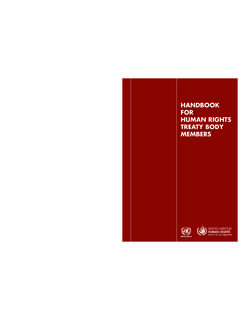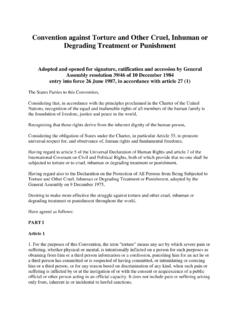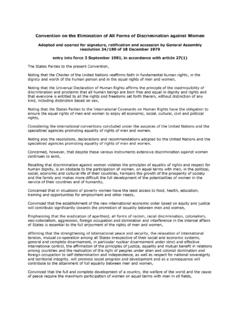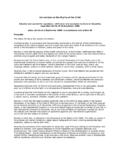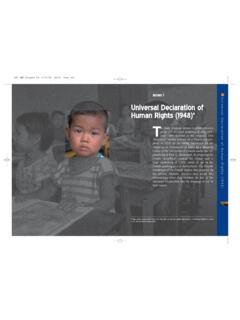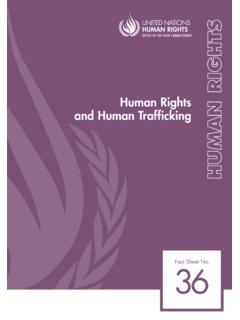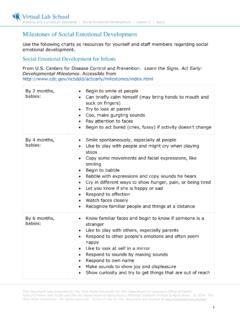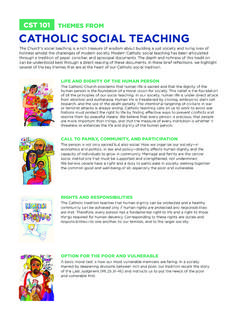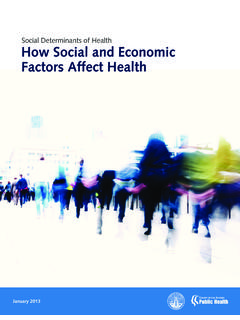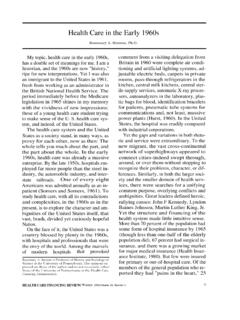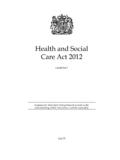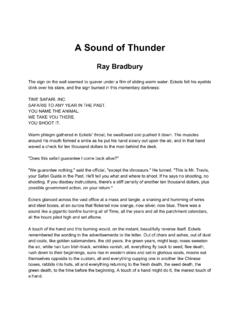Transcription of “Ignored to Death: Systemic Racism in the Canadian ...
1 1 Ignored to death : Systemic Racism in the Canadian Healthcare System Submission to EMRIP the Study on Health Brenda L Gunn, Associate Professor, Robson Hall Faculty of Law, University of Manitoba, Canada Introduction Widespread health disparities continue for Indigenous peoples in Canada. Indigenous peoples experience lower health outcomes than non-Indigenous peoples in Canada, which is exacerbated by the lack of access to quality health care and lower socio-economic situation (as confirmed by the social determinates of health). Indigenous peoples also lack access to adequate health services, especially in remote communities. In 2015, the Auditor General in Canada concluded that Health Canada did not have reasonable assurance that eligible First Nations individuals living in remote communities in Manitoba and Ontario had access to clinical and client care services and medical transportation benefits as defined for the purpose of this performance audit.
2 There is a failure to implement existing policies and strategies. However, Racism including Systemic Racism within the healthcare system is a significant contributor to Indigenous peoples lower health outcomes. Racism is not limited to interpersonal issues during the provision of health services. Structural Racism is evident throughout the Canadian health care system. Structural Racism exists in the policies and practices in the Canadian public health system and other sectors, which has profound negative effects on access to health care and health disparities. Racial discrimination in the health care system as well as broader Canadian society has direct physiological effects on health. Racial discrimination negatively impacts health through: The direct effects of stress arising from interactions that are perceived to be discriminatory, The denial of access to resources such as healthcare that fits with peoples needs, The internalization of stigma and discrimination, and The vigilance that is required in anticipation of negative treatment, which leads to stress and often tense social Ignored to death : the Case of Brian Sinclair Brian Sinclair, an Indigenous man from Manitoba in central Canada, died in the emergency department of Winnipeg s Health Sciences Centre (HSC) in September 2008.
3 He was 45 years old. He had sought care from a family physician at a primary care clinic. The physician referred him to the emergency department of HSC located just a few blocks away for further care. Brian Sinclair was sent by taxi to HSC. In his wheelchair, he entered the emergency department of the 1 Stuber, J., Meyer, I. H., & Link, B. (2008). Stigma, prejudice, discrimination and health. Social Science and Medicine, 67(3), 351-357. 2 most comprehensive hospital in Manitoba. After being ignored, unattended, and uncared for during the next thirty-four hours, he died of complications of a treatable bladder infection.
4 The Manitoba government refused to call an inquiry into Brian Sinclair s death and instead ordered an inquest. Initially, the presiding judge said questions about Racism , poverty, and disability would play a significant role when the inquest considered how similar deaths could be prevented in the future. Manitoba s Attorney General also stated that the inquest would address broader issues raised by Indigenous groups. Almost five years after Brian Sinclair died, the inquest finally began. The inquest was to consist of two phases. Phase I was to examine the circumstances under which Brian Sinclair died. Phase II was to examine what could be done to prevent similar deaths in the future. In Phase I, numerous witnessed testified that staff at the Health Sciences Centre made assumptions about Brian Sinclair that he was intoxicated; that he was homeless and had nowhere else to go.
5 Nurses on shift while Brian waited in the waiting room testified they did not see Mr. Sinclair. However, the hospital s own video monitoring system showed many nurses walked right by him and looked directly into the patient waiting area where he was seated in his wheelchair. He was simultaneously invisible and overly visible as staff only saw stereotypes and assumptions, which were used to justify ignoring him to death . Many of the emergency department staff called as witnesses repeatedly said they were confident that Racism was not a factor in Brian Sinclair s death because they treat everyone the same. In January 2014, the inquest presiding judge ruled that issues of race, Racism , poverty, disability, and substance abuse were beyond the mandate of the inquest.
6 The narrowed scope contradicted the original stated rationale for creating a second, distinctive Phase II charged with identifying how to prevent future similar preventable deaths. The ruling meant that there would be no analysis of Systemic Racism ; no examination of the role that social exclusion or classism related to poverty played; or the evident racist stereotyping and neglect of Mr. Sinclair by staff. In response, a group of Indigenous leaders, health advocates, physicians, nurses, legal experts, academics, and health researchers came together to address the glaring insufficiency of the inquest. The Sinclair Working Group is developing an alternative report that discusses Systemic Racism in the healthcare system which led to a man with a treatable bladder infection dying without receiving care in the province s largest, most comprehensive healthcare 2 The Sinclair Working Group is comprised of Dr.
7 Annette Browne, Professor in the School of Nursing at the University of British Columbia; Christa Big Canoe, Anishinabe kwe, mother, lawyer and Indigenous feminist, Legal Advocacy Director at Aboriginal Legal Services of Toronto s (ALST); Linda Diffey, Plains Cree and a member of the Peepeekisis First Nation, studied Medicine at the University of Manitoba and is currently undertaking a PhD in Applied Health Sciences that is focusing on anti-racist pedagogy in health professional education; Brenda L. Gunn, M tis, Associate Professor, Robson Hall Faculty of Law, University of Manitoba; Emily Hill joined, senior staff lawyer at ALST and was counsel for ALST in the Inquest into the death of Brian Sinclair; Dr.
8 Emma LaRocque is a scholar, author, poet and professor in the Department of Native Studies, University of Manitoba; Dr. Barry Lavallee, Saulteaux and M tis, MD (Manitoba), Masters degree in Clinical Sciences at Western in 2004 with a focus on research and teaching in Indigenous health; Dr Jos e G. Lavoie, Associate Professor in the Department of Community Health Sciences, Faculty of Health Sciences, University of Manitoba, Director of the MFN-Centre for Indigenous Health Research; Janice Linton, Librarian, University of Manitoba; Dr. Donna Martin, Assistant 3 Contrary to the testimony of nurses, wait times and sightlines were not the cause of Brian Sinclair s death . Brian Sinclair died of Racism .
9 Brian Sinclair required a simple procedure and some antibiotics to treat a bladder infection. Brian Sinclair s story exemplifies the way in which stereotypes and preconceived notions about Indigenous peoples are embedded in the healthcare system. These assumptions allowed hospital staff to ignore Brian to death . Clerical, security and medical staff all ignored the same patient throughout several shift changes. It was not physical sightlines of the waiting room that obscured the view of staff. It was the biased social lens through which Brian Sinclair was viewed. The vision of those charged with caring for this man was obfuscated by the stereotypes built within the system and throughout Canadian society.
10 Systemic Racism in Healthcare Despite the growing body of research demonstrating the ways in which Indigenous people are often mistreated, healthcare administrators and frontline staff often deny that Racism in healthcare is a determinant Indigenous peoples health. Where it is discussed, Racism tends to be conceptualized at the individual level. Racist discourses permeate Canadian society, including in the consciousness of nurses, doctors, social workers, unit clerks, and receptionists. Many settler Canadians continue to believe the myth that ill health, disease, injury and death are often one s own fault. There is little understanding of the social determinants of health and the role that the history of colonization, cultural oppression, socioeconomic disparities, discrimination, Racism , and Western organizational culture have on Indigenous peoples Health disparities between Indigenous and non-Indigenous people are rooted in Canada s colonial history.
